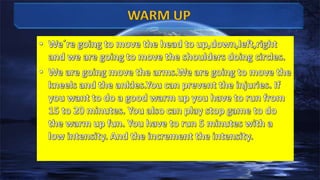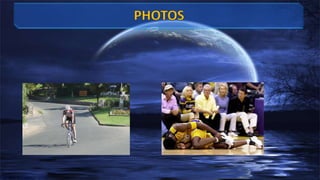1 of 4
Download to read offline




Ad
Recommended
Underwriting Discipline in Softening Markets
Underwriting Discipline in Softening MarketsJmaes Macdonald
Ã˝
Often-cited 2005 article article on the key issues that underwriters consider, why the P&C business cycle has changed, and what needs to be our focus going forward.Presentation
Presentationguest3bae0
Ã˝
The document lists and describes several famous tourist attractions across the United States, including the Statue of Liberty in New York, Central Park in New York, Las Vegas, Walt Disney World in Orlando, the Golden Gate Bridge in San Francisco, the Grand Canyon in Arizona, Mount Rushmore in South Dakota, the Sears Tower in Chicago, Napa Valley in California, the Avenue of the Giants in California, Millennium Park in Chicago, and Niagara Falls straddling the US-Canada border. Many of these landmarks are iconic symbols of their respective cities or states and draw millions of visitors annually.Commercial Wind Insurance Crisis in the Gulf Coast
Commercial Wind Insurance Crisis in the Gulf CoastJmaes Macdonald
Ã˝
This document discusses the impact of hurricane seasons on the commercial property insurance market in the Gulf states, particularly following events like Hurricane Katrina. It reveals significant increases in insurance premiums and challenges in finding coverage post-2005 as market conditions changed, affecting smaller firms more severely than larger ones. The study suggests that variations in insurance availability and cost are influenced by firm size, building type, and geographic location, while proposing a reassessment of government regulations regarding wind risk insurance.Warming up group 4
Warming up group 4Ana Ruiz Hannigan
Ã˝
The document outlines a 4-step exercise routine: 1) Run for 4 minutes to warm up at low intensity. 2) Stretch each major body part by moving in circles. 3) Complete a circuit of obstacles. 4) Sprint 100 meters at high intensity. The overall routine provides a complete warm up and incorporates low and high intensity exercises to improve flexibility and prevent injuries.Terrorism, Insurance & TRIA: Are we asking the right questions?
Terrorism, Insurance & TRIA: Are we asking the right questions?Jmaes Macdonald
Ã˝
The document discusses the complexities of terrorism risk insurance and the necessity of the Terrorism Risk Insurance Act (TRIA) in ensuring market stability. It highlights the ongoing debate on whether TRIA should be reauthorized, underscoring that terrorist risks cannot be managed in the same way as traditional insurable risks due to their catastrophic and unpredictable nature. The document critiques the arguments against TRIA while pointing out the need for a balanced approach in adequately addressing terrorism as a multifaceted risk.Designing for Interaction
Designing for InteractionNoel Perlas
Ã˝
The document discusses designing for interaction. It notes that technology has grown rapidly but human capabilities have not, leading to confusion. To design for interaction, one must start by understanding users through direct methods like interviews and indirect methods like site logs. Understanding comes from empathy, achieved through techniques like creating personas and scenarios. The goal is rich descriptions of user behavior, goals, and needs to focus on product use cases.Director's List Appeal - Fortunate to be Atenean
Director's List Appeal - Fortunate to be AteneanNoel Perlas
Ã˝
The document discusses how fortunate the author feels to have graduated from Ateneo and to now share their experiences. It describes several teachers that had a profound impact on the author, including Fr. Schmitt, Fr. Dacanay, Fr. Galdon, Fr. Lahiff, Doreen Fernandez, Fr. Nick, and Mark Escalera yam Laranas. Each teacher taught the author important life lessons about working hard, finding meaning, effective communication, and appreciating the arts. The author is now fortunate to teach information design at Ateneo and work with other great educators to pass knowledge to new students.Materialak. Zerez eginda daude gauzak? Ana Ruiz Hannigan
Ã˝
Este documento describe los diferentes materiales que usamos en nuestra vida diaria. Explica que los objetos están hechos de materiales como el metal, el plástico, la madera, el vidrio, el papel y la piedra. Describe de dónde vienen estos materiales y cómo se producen, como el metal de las rocas, la madera de los árboles, el papel de la madera y el plástico del petróleo. También menciona algunos usos comunes de cada material.Warming up
Warming upAna Ruiz Hannigan
Ã˝
The document provides instructions for several physical activities and exercises, including moving body parts in different motions like circles, running back and forth between lines, and bending down to touch the floor. It also describes rules for games like tag, where one player is designated as "it" and tries to catch the other players, and a game involving groups passing a scarf between members based on called numbers. The various sections outline short routines and rules for games to encourage physical movement.Specific strech group 7
Specific strech group 7Ana Ruiz Hannigan
Ã˝
The document provides instructions for exercises including stretching the arms in circles for 2 minutes, stretching the body for 20 minutes, and suggests playing sports like basketball, hockey, handball, rugby, and spider. It also recommends doing exercises to music to avoid injuries, moving the hip and legs in circles, and moving the ankles in circles for 1 minute.Warm up 5 c group 6
Warm up 5 c group 6Ana Ruiz Hannigan
Ã˝
This document provides information about simple exercises and stretches for different parts of the body. It discusses exercises for the ankles, hips, arms, neck, and shoulders. It also lists some children's games, including The English Hiding Place, The Shark, and The Bodice From Behind.Warming up - Group 8
Warming up - Group 8Ana Ruiz Hannigan
Ã˝
The document provides instructions for several physical activities and exercises, including moving the body in circles and different directions, running for intervals of time, bending down and touching the floor, playing tag or catch games where one person is "it" and tries to catch others, and a group game where a scarf is passed between teams based on called numbers. The exercises are intended to improve physical fitness and prevent cramps through active movement and play.Warm up -Group 5
Warm up -Group 5Ana Ruiz Hannigan
Ã˝
You start running and later touch your heels to the bottom while running. You then run with your knees up and must also run laterally. To continue, you go jumping.Trabajo science warming up - Group - 2
Trabajo science warming up - Group - 2Ana Ruiz Hannigan
Ã˝
This document provides games and exercises to warm up different body parts before athletic activities. It recommends skating to warm up ankles and reduce risk of sprains, and the game "Foxes, hens and vipers" to warm up legs. The game "Tad-tad" is suggested to warm up both legs and arms. Gymnastic movements are proposed to warm up the back, while tennis is not advised for warming up shoulders due to risk of injury. The document was created by Ane, Naiara, David and Koldo.Football warm up - Group 3
Football warm up - Group 3Ana Ruiz Hannigan
Ã˝
To warm up for football, players first run for 5 minutes to prepare their muscles. Then they stretch each major muscle group including the head, arms, and legs for 1 minute to prevent injuries. Next, players warm up specific body parts by making circular motions with their head, arms, knees, and toes. Finally, they play two 5-minute games - one where the goal scorer becomes the goalkeeper, and another German game where the player must score without the ball touching the ground or else they become the goalkeeper, to fully warm up before the match.More Related Content
More from Ana Ruiz Hannigan (7)
Warming up
Warming upAna Ruiz Hannigan
Ã˝
The document provides instructions for several physical activities and exercises, including moving body parts in different motions like circles, running back and forth between lines, and bending down to touch the floor. It also describes rules for games like tag, where one player is designated as "it" and tries to catch the other players, and a game involving groups passing a scarf between members based on called numbers. The various sections outline short routines and rules for games to encourage physical movement.Specific strech group 7
Specific strech group 7Ana Ruiz Hannigan
Ã˝
The document provides instructions for exercises including stretching the arms in circles for 2 minutes, stretching the body for 20 minutes, and suggests playing sports like basketball, hockey, handball, rugby, and spider. It also recommends doing exercises to music to avoid injuries, moving the hip and legs in circles, and moving the ankles in circles for 1 minute.Warm up 5 c group 6
Warm up 5 c group 6Ana Ruiz Hannigan
Ã˝
This document provides information about simple exercises and stretches for different parts of the body. It discusses exercises for the ankles, hips, arms, neck, and shoulders. It also lists some children's games, including The English Hiding Place, The Shark, and The Bodice From Behind.Warming up - Group 8
Warming up - Group 8Ana Ruiz Hannigan
Ã˝
The document provides instructions for several physical activities and exercises, including moving the body in circles and different directions, running for intervals of time, bending down and touching the floor, playing tag or catch games where one person is "it" and tries to catch others, and a group game where a scarf is passed between teams based on called numbers. The exercises are intended to improve physical fitness and prevent cramps through active movement and play.Warm up -Group 5
Warm up -Group 5Ana Ruiz Hannigan
Ã˝
You start running and later touch your heels to the bottom while running. You then run with your knees up and must also run laterally. To continue, you go jumping.Trabajo science warming up - Group - 2
Trabajo science warming up - Group - 2Ana Ruiz Hannigan
Ã˝
This document provides games and exercises to warm up different body parts before athletic activities. It recommends skating to warm up ankles and reduce risk of sprains, and the game "Foxes, hens and vipers" to warm up legs. The game "Tad-tad" is suggested to warm up both legs and arms. Gymnastic movements are proposed to warm up the back, while tennis is not advised for warming up shoulders due to risk of injury. The document was created by Ane, Naiara, David and Koldo.Football warm up - Group 3
Football warm up - Group 3Ana Ruiz Hannigan
Ã˝
To warm up for football, players first run for 5 minutes to prepare their muscles. Then they stretch each major muscle group including the head, arms, and legs for 1 minute to prevent injuries. Next, players warm up specific body parts by making circular motions with their head, arms, knees, and toes. Finally, they play two 5-minute games - one where the goal scorer becomes the goalkeeper, and another German game where the player must score without the ball touching the ground or else they become the goalkeeper, to fully warm up before the match.